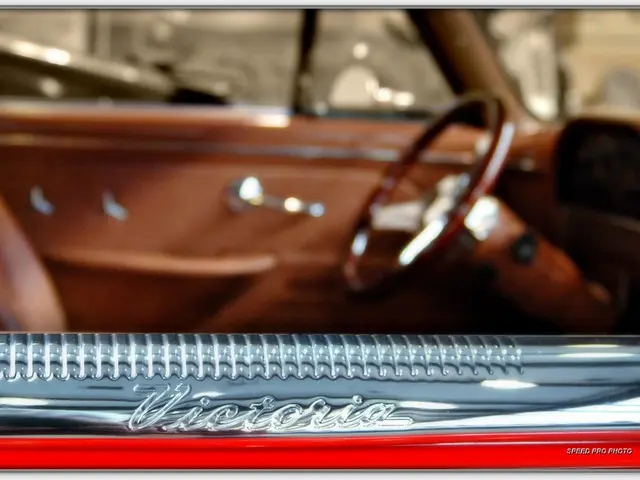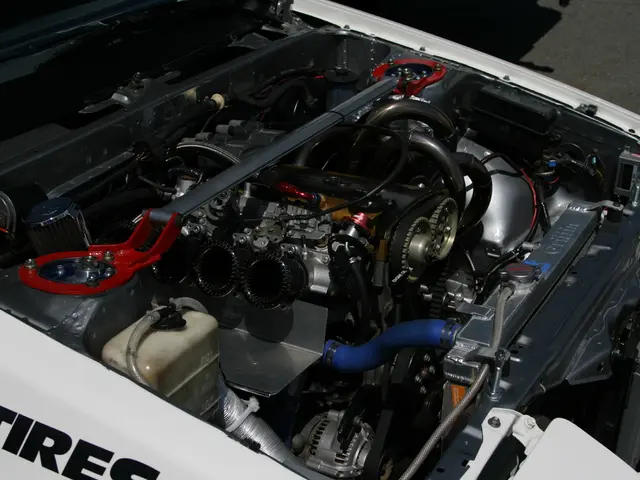Re-emerging Magic Eye Software Serves Up a Blast from the '90s Past
Wannabe Tech Whiz's Guide to Magic Eye Images
Dive Deeper into the '90s Magic: Stare-EO Workshop
Remember those intriguing Magic Eye images that were all the rage in the '90s? From posters to adverts, these computer-generated autostereograms were a marvelous blend of art and technology. The thrill of decoding one was unmatched - a hidden Christmas tree or a secret rave event magically appearing before your eyes.
But have you ever wondered how those optical illusions were created? Well, dig no further! Some sleuth managed to get hold of a long-lost treasure: the Stare-EO Workshop. A program published by N.E. Thing Enterprises themselves, it allows us common folk to create our very own Magic Eye images.
Interestingly, it seems that this vintage software has its charm and edge over modern solutions. You may want to check out our list of top 3D modeling software if you're curious.
While the FAQs on the Magic Eye website remains tight-lipped about their secrets, it appears that honesty was once a physical keyhole away. In the video above by LGR, we get an inside look at the history of Magic Eye, inspired by an enduring fascination with the images. Our hero eventually tracked down the original Stare-EO Workshop, which launched on a 5.25in floppy disk for a cool $40 in 1991.
The program is a playground of creation, offering tools for drawing your 3D objects. Colors here are more than just eye-catching; they coded the depth for each element. With a range of tools - lines, shapes, polygons, and text included - you can adjust each object using function keys. You can also import external images, embrace your inner Picasso, and incorporate them into your unique 3D masterpiece. The multi-colored dot pattern that hides the final image is automatically generated, creating the illusion of depth when viewed correctly.
But there's a twist. The fun didn't stop at using the program. To activate the Stare-EO Workshop, you needed to crack codes hidden within Magic Eye images found in the instruction manual – now that's a challenge worthy of a psychopathic genius!
However, it becomes clear that the program is just one piece of the puzzle. Magic Eye images in books were far more refined, complete with ray-traced 3D imagery and gradients, thanks to more sophisticated tools that were outside of the Stare-EO Workshop's reach.
Other autostereogram software existed back in the day, like Stereograms! by Lifestyle software, Stereolusions by I/O software, and the more recent SIRDS by Katsura. Today, creating Magic Eye-style artworks in popular 3D software like Blender is possible, but the process now involves several steps, making it trickier than it once was.
Note: To unlock the hidden magic within you, join our newsletter for a daily dose of design news, reviews, and tutorials that will empower your creative journey!
Magic Eye Images: Sneak Peek into the Past
All Eyes on Magic Eye: How'd Ya See 'Em?
FAQs:
1. What is Stare-EO Workshop?
Answer: Stare-EO Workshop is a long-lost software program released in 1991 by N.E. Thing Enterprises, which allows users to create their very own Magic Eye images. Users can create their designs using coded colors, various tools, and even import images.
2. Is the security feature of Stare-EO Workshop interesting?
Answer: Absolutely! The program required users to enter codes hidden in Magic Eye images found in the instruction manual to activate it. It's a playful twist that adds an extra layer of challenge.
- The design tools in the Stare-EO Workshop, a vintage software, allow for the creation of unique Magic Eye images, offering a blend of art and technology.
- Colors in the Stare-EO Workshop are more than just visually appealing; they code the depth for each element in the 3D designs.
- Users can adjust objects using function keys and even import external images to incorporate into their unique 3D masterpiece.
- For those intrigued by the process, a list of top 3D modeling software is worth exploring, offering more advanced creative possibilities.
- The original Magic Eye images in books are far more refined, with ray-traced 3D imagery and gradients, thanks to more sophisticated tools outside the Stare-EO Workshop's reach.
- Other autostereogram software, such as Stereograms!, Stereolusions, and SIRDS, were available during the '90s, offering different creative options.
- Today, creating Magic Eye-style artwork in popular 3D software like Blender is feasible, but the process now involves several steps, making it trickier than it once was.







